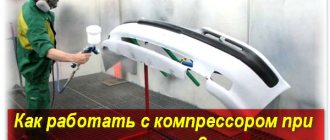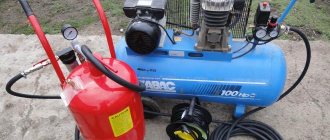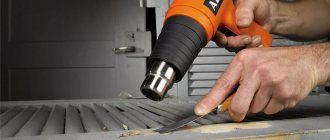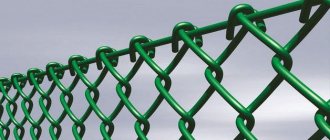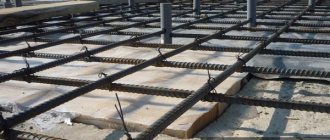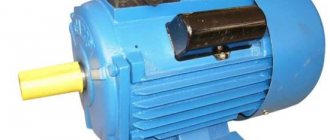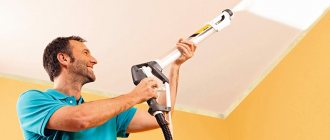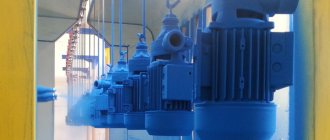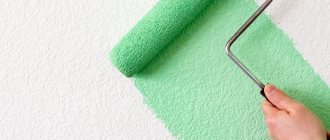Hello, dear readers of the Myavto.net site. In this article we will talk about one of the main tools of a car painter - a spray gun for painting a car.
. Let's look at the main types of paint guns, how to properly regulate, configure and how to choose a suitable paint sprayer.
A little history of creation. The spray gun appeared long before the creation of the car. In 1907, the first spray gun was introduced. And the principle of air spraying itself was developed by the American doctor Allen Devilbis. He used this technology to administer medicine into the nose. So the famous company DeVilbiss, named after its inventor, became a leader in the production of paint guns.
A car painting spray gun is a high-tech tool used to transfer paint to the car body. In professional painting, the quality of the spray gun used plays an important role; the better the spray, the better the result. For a beginner, the difference will not be so noticeable, since they do not have the skill to work with a pistol. It is possible to learn and paint with dignity even with budget equipment.
The structure and principle of operation of a pneumatic spray gun for painting cars
The final stage in the production of a car, as well as its repair, is the application of paintwork. It is impossible to imagine a car mechanic carrying out this work using a brush - such a process would be lengthy, and the paint consumption would be colossal. Today, cars are painted using a spray gun - a special device that sprays paint and varnish material.
Externally, the spray gun resembles the handle of a pistol. It consists of the following main elements:
- handle - with its help the tool is held in the hand;
- material tank;
- trigger – responsible for starting the spraying process;
- paint nozzle (nozzle) – creates the direction of the jet for painting a car with a spray gun;
- pressure regulator – controls the flow of compressed air and changes its pressure.
Oxygen entering the spray gun through a special hose is blocked by a damper. After pressing the trigger, compressed air begins to move through the internal channels of the device. Since the oxygen supply is blocked, the air flow pushes paint particles out of the tank through the nozzle.
Appearance of the spray gun
To increase or decrease the spraying speed, craftsmen change the size of the nozzle when working with a spray gun. The operating principle of the device can be compared to a household spray gun, but instead of water, the device sprays paint.
Air pressure
An increase in air pressure for a given nozzle diameter leads to:
In turn, productivity and transfer coefficient determine the cost-effectiveness of equipment use.
| Rice. 1. Setting up the spray gun, main components of the spray gun |
What does an increase in air pressure at the inlet of the spray gun lead to?
Increase the air pressure at the outlet by 0.5 atm. leads to an increase in losses due to fog formation up to 10-20%.
When the pressure increases above the optimal level, the size of the liquid phase imprint practically does not increase, but the size of the fog imprint can increase significantly. When the pressure decreases below optimal, productivity drops and the entire print “shrinks.”
The optimal distance can be approximately expressed by the dependence: L (cm) = 10xP (atm.). For example, at a pressure of 2.5 atm. this is 25 cm.
Types of pneumatic spray guns
Manufacturers on the Russian market offer a large selection of paint sprayers. They differ in price, appearance, characteristics. But their main difference is the type. There are 3 main types of spray guns:
- HP is a budget but outdated device that uses a high pressure system. Due to the powerful air flow, a strong release of paint occurs. Only 40% of the solution reaches the surface, 60% turns into a colorful mist.
- HVLP is a type of paint gun with low pressure but high volume of compressed air. The nozzle used in this spray gun reduces the jet for painting a car, reducing the formation of fog by up to 30-35%.
- LVLP is an innovative unit created using the “low volume of air at low pressure” technology. The device provides high-quality paint coverage. 80% of the solution reaches the surface.
When choosing a pneumatic paint sprayer, each buyer takes into account its purpose, parameters, as well as his financial capabilities.
Assembling a homemade device
Water-based paints are more often used for finishing walls and ceilings. The area of structures is usually not small, so the desired tool productivity should be close to 150 square meters per hour.
For a homemade low-pressure spray gun for water-based paint, it would be appropriate to use a vacuum cleaner (1.5 kW power) with an air blowing function. If there is none, then you can connect a hose to the outlet. You will only need to install a sealed valve-adapter from one diameter to another. You will also need:
- PVC tee with a 45 degree turn;
- pipe 35-40 and 72 mm (diameter like a tee - 32 mm);
- valve for tubeless tire;
- rivet for hood;
- manual spray gun;
- tube with a diameter of 4-6 mm;
- paint tank with stopper.
Which nozzle to use for painting a car?
Craftsmen use a paint sprayer not only for the final painting of the car, but also for its putty and primer. The nozzle is selected depending on the purpose of use, as well as the viscosity and composition of the material. For example, to paint a car with base enamel, the diameter of the nozzle on a spray gun needs a minimum size, for putty - a maximum.
Beginners can choose a universal device with a 1.4 mm monolithic nozzle. It is suitable for applying a primer mixture diluted slightly above the norm, as well as for painting car elements with various paints and varnishes. But it should be taken into account that the spraying result may be of poor quality: there may be overuse of paint due to fog or the appearance of smudges.
Paint sprayers with a set of removable nozzles are available for sale. Professional craftsmen recommend using a spray gun with a nozzle that can be removed for painting a car. This allows you to change the nozzle for the desired purpose.
Recommendations from the experts
Painting the ceiling with a spray gun involves directing the nozzles in a vertical or inclined position. In this case, the choice should be made in favor of electric models. With their help, the result is uniform, without drops or gaps.
If you are deciding which spray gun is best for painting walls and ceilings for your home, then you should consider devices that pump up pressure from 4 Atm. If you plan to work with different materials, then you need to choose devices with replaceable nozzles. Regarding the tank, a metal one will be more practical due to durability, reliability and easier cleaning (the same applies to the body). True, plastic is lighter and allows you to control the filling of the container due to the relative transparency of the walls.
Required nozzle diameter for painting a car with a spray gun
The nozzle is selected based on the paint material used, as well as the method of applying the paint. By correctly choosing the diameter of the spray gun nozzle for painting a car, the spraying process will become as efficient as possible, and the solution consumption will be rational. If the nozzle size is not suitable, the mixture will be sprayed with the formation of excess fog or with smudges. In addition, improper operation can lead to clogging of the hole and failure of the device itself.
Nozzles in pneumatic spray devices
When the trigger is pulled, the shutter needle in the paint sprayer opens a hole through which the paint is forced out by compressed air. Depending on the consistency of the solution and the diameter of the spray gun nozzle used to paint the car, the performance of the device is determined. The optimal nozzle size for applying paint and varnish material with a pneumatic sprayer:
- 1.3-1.4 mm – base enamel;
- 1.4-1.5 mm – acrylic paint, colorless varnish;
- 1.3-1.5 mm – primary soil mixture;
- 1.7-1.8 mm – filler primer, “Raptor” paint;
- 0-3.0 mm – liquid putty.
For high-quality painting of a car, you need a certain diameter of the nozzle on the spray gun. Some craftsmen prefer to use a universal nozzle size. Experience allows them to reduce paint consumption and achieve good results regardless of the solution used. But a universal nozzle will not work for working with primer mixture and putty - you will need to buy an additional set of nozzles.
Airless Spray Nozzles
Paint guns powered by an electric motor have high productivity. Most often they are used in large-scale production of automotive equipment, and not for domestic purposes. To paint a car, you need a spray gun with a small nozzle, which is designed for an airless spray unit. The size of the nozzle depends on the viscosity of the mixture used (in inches):
- 0.007″ – 0.011″ – liquid primer, varnish, stain;
- 0.011″ – 0.013″ – low viscosity mixture;
- 0.015″ – 0.017″ – oil paints, primer;
- 0.019″ – 0.023″ – anti-corrosion coating, facade paintwork;
- 0.023″ – 0.031″ – fire retardant material;
- 0.033″ – 0.067″ – pasty mixture, putty, viscous and viscous composition.
When buying an airless spray gun for painting a car, not everyone can figure out the nozzle and determine what size is needed and what it means. The product marking contains 3 numbers:
- 1st – spray angle, calculated by multiplying the number by 10;
- 2nd and 3rd – hole size.
As an example, consider the XHD511 nozzle. The number 5 means the opening angle of the torch is 50°, which will leave an imprint approximately 2 times smaller in width - 25 cm.
Electric spray gun
The number 11 is responsible for the diameter of the spray gun nozzle required for painting a car. In the marking it is indicated in thousandths of an inch (0.011). That is, with the XHD511 nozzle you can paint the surface with a low-viscosity mixture.
The best pneumatic spray gun using spray technology
Now be extremely careful. Each technology has its pros and cons.
HP pneumatic spray guns.
The devices are characterized by high outlet pressure, which can reach up to 1.5 atm. This feature leads to high air consumption. However, the resulting plume is quite wide. It allows you to quickly and evenly apply paint.
The LVLP air spray gun is often chosen by experienced car service technicians due to savings, the possibility of applying paint close up and the absence of the need for polishing, which is not uncommon.
Speaking about HLVP, we note that such pneumatic devices are something between HP and LVLP.
Which spray gun to choose
When choosing a paint sprayer, you need to understand for what purpose it will be used. Airless spray guns are necessary for painting large equipment: trucks, freight cars, ships. For passenger cars and individual parts, it is advisable to choose a pneumatic device. Next, you should decide on the type of spraying, paying attention to the pros and cons of the spray gun:
- HP – suitable for home use. Having selected the appropriate diameter of the spray gun nozzle, the master can use the unit to paint a car with metallic or varnish with his own hands. The paint is applied well and quickly to the surface. But glossy materials require additional polishing, since due to excess paint mist the coating may not be perfectly smooth.
- HVLP – in comparison with the previous paint sprayer, this device paints better and consumes less paint material. But this type of device requires a powerful and expensive compressor, as well as work under certain conditions. It is necessary to prevent dust and dirt from entering the work surface.
- LVLP is the best unit with which there is no need to polish the car after painting. But such a spray gun is expensive. And the master who will work with him must be a professional. Errors in operation and poor control of the spray gun will lead to the formation of smudges.
If you are a beginner, then give preference to inexpensive models that will help you gain experience and improve your skills. Also, if you plan to use the unit on rare occasions, it is advisable to purchase HP or HVLP paint sprayers. And professionals who regularly paint cars should take a closer look at LVLP-type models.
And some more tips:
- For convenience and more delicate work, choose spray guns equipped with adjustments - air flow, paint flow, and torch shape. For example, adjusting the spray pattern on your paint sprayer will help achieve wider coverage.
- Working with a paint sprayer requires careful cleaning of the air leaving the compressor from oil, which will inevitably be in it. If your compressor is not oil-free, you need to take care of cleaning the air from oil - install a filter at the outlet
Having replenished your knowledge base, you can safely go for a spray gun. To consolidate, better understand and remember, we recommend that you watch a specially prepared video that will help you determine which spray gun is better:
Changing painting methods depending on gun type
The general principle of spray painting requires holding the spray gun perpendicular to the surface being painted. This is quite difficult to do, especially in hard-to-reach places and when working from the bottom up (for example, in wheel arches). In practice, an experienced master does not think about the position of the spray gun in his hand, focusing on the shape of the torch. Flaws in amateur painting using an inclined spray gun appear in the form of stripes and “clouds” (on metallic paints) or ripples (on regular car enamels).
Correct position of the spray gun relative to the surface to be painted.
The distance to the body metal depends on the type of spray gun. A conventional high-pressure spray gun produces a conical spray that is effective at a distance of 25–30 centimeters. At shorter distances, paint particles hit and bounce off the metal, resulting in paint haze, dusting, and streaking.
For low-pressure guns (HVLP, RP, LVLP) with a cup-shaped torch, the optimal distance is from 10 to 20 cm. When moving the spray gun, you should try to keep it parallel to the surface of the body, avoid arc-shaped and circular movements. Try to cover the enamel strips by two-thirds, maintain a constant speed of movement of the gun (40–50 centimeters per second). When painting dismantled parts (fenders, hoods, doors), special rotary stands are used, which allow you to first paint the internal surfaces, corners, and ends of the body element. After this, the front surface is painted.
Experienced craftsmen use a method of continuous painting of a part, while the spray gun moves in a wave-like manner. When doing amateur painting, in the first stages it is better to use horizontal passes, in which the gun is moved in and out with the trigger partially pressed. This way you avoid a “dry” edge.
The “splatter” spraying method, in which paint is applied pointwise with short trigger presses, is used only for hard-to-reach areas of internal surfaces. With this spraying method, insufficient coverage or sagging is inevitable. It is used to avoid overuse of paint. For cylindrical, lattice parts, the size of the torch is adjusted to the width (diameter) of the element, and it is painted in 3-4 vertical or horizontal passes.
Tool requirements
How often will the spray gun be used? If you need it to paint one car or several, then for such volumes there is no need to purchase an expensive professional device. But at the same time, you still need a painting gun that can do its job well. Inexpensive HVLP devices with the necessary characteristics are suitable for such purposes.
To choose a tool, you should also determine the tasks that will have to be solved. There are sprayers with different spray systems. To make the right choice, you should get acquainted with the theory and understand the variety of tools and their characteristics. This is the only way to make the right and intelligent choice.
Any device is suitable for painting a car, but the higher the quality of the device, the better the final coating result will be. For beginners, experts recommend purchasing the most budget-friendly but high-quality solution, and then, when you gain experience, you can buy a more professional spray gun.
Compressor
It is recommended to select a spray gun according to the characteristics of the compressor. There is another way - after purchasing a gun, choose a compressor for it. The compressor must produce the required volume under pressure constantly while working with the spray gun.
The basic rule that influences the choice of a spray gun for painting a car is that the compressor must produce a volume 1.5 times greater than that required for normal operation of the gun at pressure.
If the compressor capacity is insufficient, good atomization will not be achieved. The compressor must produce characteristics above the required pressure, but the amount of air must be sufficient.
Hoses and fittings are no less important for quality results. If a ¼ inch hose is used, then the air flow will be abnormal. You should find a hose that has an internal diameter of 3/8 inch.
The hose must be equipped with fittings and couplings capable of allowing rapid air flow.
3D printer nozzle material
Nozzles can be made from a variety of materials: brass, hardened steel and stainless steel. Each nozzle is suitable for melting different types of fibers.
Brass nozzle for 3D printer
The brass 3D printer nozzle is the most common nozzle for all FDM printers. This is a standard version of the nozzle ; it is found on almost all printers. The main reason for its popularity is its low cost. This nozzle provides good thermal conductivity. Brass, although the most common, is limited by the type of fibers it can fuse.
Read also: 5 popular 3D printing technologies: FDM, SLA, SLS, PolyJet, DMLS
Brass nozzles are ideal for printing with non-abrasive fibers such as PLA, ABS, nylon, PETG, TPU and others.
However, these nozzles wear out quickly when using carbon fiber, metal-coated filament, or fiberglass filament. This will cause print quality to deteriorate over time.
Therefore, brass nozzles should only print with non-abrasive materials to ensure consistent printing over a long service life.
Hardened steel 3D printer nozzle
One of the problems with brass nozzles is their durability. Brass nozzles wear out quickly, which affects print quality. This problem is easily solved by using hardened steel nozzles , as they are approximately 10 times more wear resistant than brass. But a hardened steel nozzle also has some disadvantages, such as lower heat transfer and the possible presence of lead. Lead makes it useless for printing models that come into contact with skin and/or food. Lower heat transfer means these nozzles typically require higher heating temperatures than brass.
So, to print using abrasive materials such as carbon fiber, fiberglass, metal-filled filament, you will need to use a hardened steel nozzle.
Stainless steel 3D printer nozzle
Stainless steel nozzles are also quite popular, especially because they can be used with light abrasive materials. Additionally, since stainless steel nozzles are lead-free, these nozzles can be used for products that come into contact with skin and/or food. To 3D print any models, the nozzle must be lead-free.
Torch width
Adjustment of the width of the spray guns is carried out by redistributing air into the holes of the “horns” of the spray head.
What is the optimal cross-sectional shape of a spray gun torch?
The most economical torch has a minimum width at which it is possible to achieve uniform application, usually 12-15 cm.
| Rice. 5. Correct and irregular shapes of the spray gun torch |
Diagnostics of a spray gun based on the shape of the torch
We bring to your attention an interesting diagram that allows you to determine malfunctions of the spray gun based on a defect in the shape of the torch.
Source

